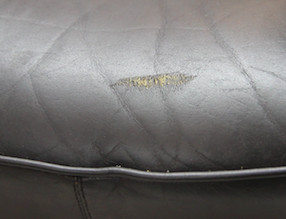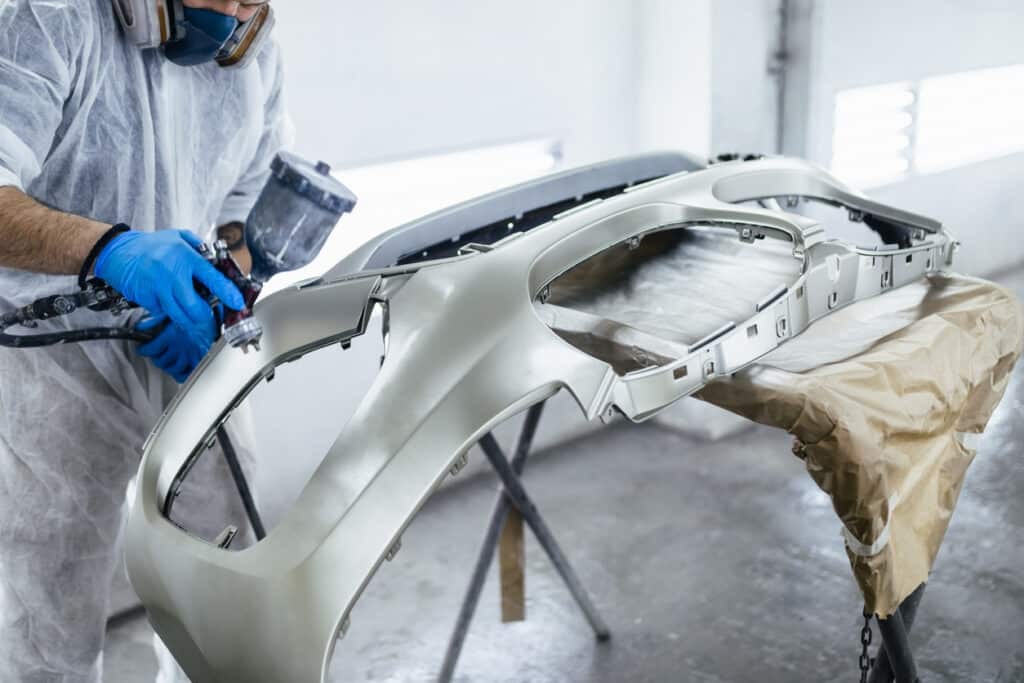How To Fix Temperature Gauge In Car Accurately
Is your car’s temperature gauge not working correctly? Don’t worry, CARDIAGTECH.NET is here to help you diagnose and resolve the issue, ensuring your engine’s health and preventing potential breakdowns. Learn how to troubleshoot a faulty temperature gauge with expert tips on coolant temperature sensor, thermostat replacement and instrument cluster repairs.
Let’s explore solutions for temperature reading problems, sensor issues, and potential fixes.
1. Understanding the Basics of Your Car’s Temperature Gauge
The temperature gauge in your car provides crucial information about your engine’s operating temperature. A functional gauge is essential for monitoring engine health, optimizing fuel efficiency, and preventing overheating, which can lead to severe engine damage.
1.1. Why is the Temperature Gauge Important?
- Engine Health: Monitoring the engine’s temperature helps prevent overheating, which can cause significant damage, such as warped cylinder heads or cracked engine blocks.
- Fuel Efficiency: The engine control unit (ECU) uses temperature data to adjust the fuel-to-air mixture. An accurate temperature reading ensures optimal combustion and fuel economy.
- Early Problem Detection: Unusual temperature readings can indicate underlying issues, such as a failing thermostat, coolant leaks, or a malfunctioning water pump.
1.2. Common Symptoms of a Faulty Temperature Gauge
- Erratic Readings: The gauge fluctuates rapidly or displays inconsistent temperature levels.
- No Reading: The gauge remains at the lowest setting, even after the engine has warmed up.
- Overheating Indication: The gauge consistently shows high temperatures, even when the engine is not overheating.
- Check Engine Light: A faulty temperature sensor can trigger the check engine light.
2. Identifying the Root Cause: Diagnostic Steps
Before diving into repairs, it’s essential to accurately diagnose the cause of the temperature gauge malfunction. Here’s a step-by-step approach:
2.1. Initial Inspection
- Check Coolant Level: Ensure the coolant reservoir is filled to the appropriate level. Low coolant can cause inaccurate temperature readings.
- Inspect Radiator Hoses: Look for any signs of leaks, cracks, or damage to the radiator hoses.
- Examine the Radiator Cap: A faulty radiator cap can prevent the cooling system from maintaining proper pressure, leading to temperature fluctuations.
2.2. Using an OBD2 Scanner
An OBD2 scanner can provide valuable information about the engine’s operating conditions and any stored trouble codes.
- Connect the Scanner: Plug the OBD2 scanner into the diagnostic port, typically located under the dashboard.
- Read Trouble Codes: Check for any codes related to the engine coolant temperature (ECT) sensor or thermostat.
- Monitor Live Data: Use the scanner to monitor the ECT sensor’s live temperature readings. Compare these readings to the gauge’s display to identify discrepancies.
| OBD2 Code | Description |
|---|---|
| P0115 | Engine Coolant Temperature Circuit Malfunction |
| P0116 | Engine Coolant Temperature Circuit Range/Performance Problem |
| P0117 | Engine Coolant Temperature Circuit Low Input |
| P0118 | Engine Coolant Temperature Circuit High Input |
| P0128 | Coolant Thermostat (Coolant Temperature Below Thermostat Regulating Temperature) |
2.3. Testing the Coolant Temperature Sensor (CTS)
The CTS is a crucial component that provides temperature data to the ECU and the temperature gauge.
- Locate the CTS: Consult your vehicle’s repair manual to find the CTS, usually located near the thermostat housing or cylinder head.
- Disconnect the Wiring Connector: Carefully disconnect the wiring connector from the CTS.
- Measure Resistance: Use a multimeter to measure the resistance across the sensor terminals. Compare the reading to the manufacturer’s specifications for various temperatures.
| Temperature (°C) | Resistance (Ohms) |
|---|---|
| 20 | 2,000 – 3,000 |
| 80 | 200 – 400 |
2.4. Checking the Thermostat
The thermostat regulates coolant flow to maintain optimal engine temperature. A faulty thermostat can cause overheating or prevent the engine from reaching operating temperature.
- Locate the Thermostat: The thermostat is typically housed within the thermostat housing, where the upper radiator hose connects to the engine.
- Remove the Thermostat: Drain some coolant and remove the thermostat housing to access the thermostat.
- Inspect the Thermostat: Check for any signs of damage, corrosion, or sticking.
- Test the Thermostat: Place the thermostat in a pot of water and heat the water. Observe whether the thermostat opens at the specified temperature (usually around 82-93°C or 180-200°F).
3. Step-by-Step Guide: Fixing the Temperature Gauge
Once you’ve identified the cause of the problem, you can proceed with the necessary repairs. Here’s how to fix common issues affecting the temperature gauge.
3.1. Replacing a Faulty Engine Coolant Temperature Sensor (CTS)
The CTS is the most common culprit behind inaccurate temperature readings. Replacing it is a straightforward process:
- Gather Your Tools:
- New CTS
- Wrench or socket set
- Coolant
- Bucket
- Rag
- Cool Down the Engine: Allow the engine to cool down completely before starting the repair.
- Drain Coolant: Place a bucket under the radiator and drain some coolant to prevent spillage when removing the CTS.
- Disconnect Wiring Connector: Disconnect the wiring connector from the old CTS.
- Remove Old CTS: Use a wrench or socket to unscrew the old CTS from the engine.
- Install New CTS: Apply thread sealant to the new CTS and screw it into place, tightening it to the manufacturer’s specified torque.
- Reconnect Wiring Connector: Reconnect the wiring connector to the new CTS.
- Refill Coolant: Refill the cooling system with the drained coolant.
- Start Engine and Check: Start the engine and monitor the temperature gauge to ensure it reads correctly. Check for any leaks around the new CTS.
3.2. Replacing a Faulty Thermostat
A malfunctioning thermostat can cause the engine to overheat or run too cold. Here’s how to replace it:
- Gather Your Tools:
- New thermostat
- New thermostat gasket
- Wrench or socket set
- Coolant
- Bucket
- Rag
- Cool Down the Engine: Allow the engine to cool down completely.
- Drain Coolant: Drain some coolant from the radiator.
- Remove Thermostat Housing: Locate the thermostat housing and remove the bolts holding it in place.
- Remove Old Thermostat: Remove the old thermostat and gasket from the housing.
- Install New Thermostat: Install the new thermostat with a new gasket, ensuring it is oriented correctly (refer to your vehicle’s repair manual).
- Reinstall Thermostat Housing: Reattach the thermostat housing and tighten the bolts to the specified torque.
- Refill Coolant: Refill the cooling system with coolant.
- Start Engine and Check: Start the engine and monitor the temperature gauge to ensure it reads correctly. Check for any leaks around the thermostat housing.
3.3. Bleeding Air from the Coolant System
Air pockets in the cooling system can cause inaccurate temperature readings. Bleeding the system removes trapped air:
- Locate Bleeder Valve: Find the bleeder valve, usually located on the thermostat housing or radiator.
- Open Bleeder Valve: With the engine cold, open the bleeder valve slightly.
- Start Engine: Start the engine and let it idle.
- Monitor Coolant Flow: Watch for a steady stream of coolant without air bubbles coming from the bleeder valve.
- Close Bleeder Valve: Once the air is removed, close the bleeder valve.
- Check Coolant Level: Check the coolant level in the reservoir and add coolant as needed.
3.4. Addressing a Faulty Instrument Cluster
If the CTS and thermostat are functioning correctly, the issue might lie within the instrument cluster itself. This is a more complex problem that may require professional attention.
- Check Wiring Connections: Inspect the wiring harness and connections to the instrument cluster for any signs of damage or corrosion.
- Test Gauge Functionality: Some advanced diagnostic tools can test the functionality of individual gauges within the instrument cluster.
- Consider Professional Repair: If the instrument cluster is faulty, it may need to be repaired or replaced by a qualified technician.
4. Advanced Troubleshooting Techniques
For more complex issues, consider these advanced troubleshooting steps:
4.1. Checking the Wiring Harness
Damaged or corroded wiring can disrupt the signal between the CTS and the temperature gauge.
- Inspect Wiring: Examine the wiring harness for any signs of damage, such as frayed wires, melted insulation, or corrosion.
- Test Continuity: Use a multimeter to test the continuity of the wires between the CTS and the instrument cluster.
- Repair or Replace Wiring: Repair any damaged wires or replace the entire wiring harness if necessary.
4.2. Verifying Ground Connections
A poor ground connection can cause inaccurate readings or gauge failure.
- Locate Ground Points: Identify the ground points for the CTS and instrument cluster.
- Clean Ground Connections: Clean any corroded ground connections using a wire brush.
- Test Ground Continuity: Use a multimeter to verify that the ground connections have good continuity to the vehicle’s chassis.
4.3. Diagnosing ECU Issues
In rare cases, the ECU itself may be the source of the problem.
- Check ECU Connections: Inspect the ECU connectors for any signs of corrosion or damage.
- Consult a Professional: Diagnosing ECU issues often requires specialized equipment and expertise. Consider consulting a qualified technician for further diagnosis and repair.
5. Pro Tips for Maintaining Your Car’s Cooling System
Regular maintenance can prevent temperature gauge issues and ensure your engine runs smoothly.
5.1. Regular Coolant Flushes
Flush the cooling system every 30,000 miles or as recommended by the vehicle manufacturer to remove contaminants and maintain optimal coolant performance.
5.2. Inspecting Hoses and Clamps
Regularly inspect radiator hoses and clamps for any signs of wear, cracks, or leaks. Replace them as needed to prevent coolant loss and overheating.
5.3. Checking the Radiator Cap
Test the radiator cap to ensure it maintains the correct pressure. A faulty radiator cap can lead to coolant loss and temperature fluctuations.
5.4. Monitoring Temperature Gauge Readings
Pay attention to your car’s temperature gauge and address any unusual readings promptly. Early detection can prevent more significant engine damage.
6. The Role of CARDIAGTECH.NET in Automotive Diagnostics
At CARDIAGTECH.NET, we understand the critical role accurate diagnostics play in maintaining your vehicle’s health. Our range of diagnostic tools and equipment empowers both professional technicians and DIY enthusiasts to quickly and accurately identify issues, ensuring timely repairs and optimal performance.
6.1. High-Quality Diagnostic Tools
CARDIAGTECH.NET offers a wide selection of high-quality OBD2 scanners, multimeters, and other diagnostic tools designed to meet the needs of any automotive repair project. Our tools provide accurate and reliable data, helping you pinpoint the root cause of temperature gauge issues and other problems.
6.2. Expert Support and Guidance
Our team of experienced technicians is available to provide expert support and guidance, helping you navigate complex diagnostic procedures and choose the right tools for your specific needs. We are committed to ensuring you have the knowledge and resources to tackle any automotive repair challenge.
6.3. Enhancing Efficiency and Accuracy
By investing in CARDIAGTECH.NET diagnostic tools, you can enhance your efficiency, improve the accuracy of your repairs, and ultimately save time and money. Our products are designed to streamline the diagnostic process, providing you with the insights you need to make informed decisions and keep your vehicle running smoothly.
7. Utilizing CARDIAGTECH.NET Tools for Temperature Gauge Repair
CARDIAGTECH.NET provides the tools necessary for diagnosing and repairing temperature gauge issues effectively. Here’s how you can use our products to address these problems:
7.1. OBD2 Scanners for Code Reading
Use CARDIAGTECH.NET OBD2 scanners to read diagnostic trouble codes (DTCs) related to the engine coolant temperature sensor or thermostat. This will help you quickly identify potential issues.
7.2. Multimeters for Sensor Testing
Employ CARDIAGTECH.NET multimeters to test the resistance and voltage of the coolant temperature sensor. This ensures the sensor is functioning within the manufacturer’s specified range.
7.3. Diagnostic Software for Live Data Analysis
Utilize CARDIAGTECH.NET diagnostic software to monitor live data from the engine coolant temperature sensor. Compare the readings with the temperature gauge display to pinpoint discrepancies.
7.4. Comprehensive Diagnostic Kits
Consider CARDIAGTECH.NET comprehensive diagnostic kits, which include a range of tools and accessories to tackle a variety of automotive issues. These kits provide everything you need for a thorough diagnosis and repair.
8. Advantages of Purchasing Diagnostic Tools from CARDIAGTECH.NET
Choosing CARDIAGTECH.NET for your diagnostic tool needs offers several key advantages:
8.1. Wide Selection of High-Quality Tools
CARDIAGTECH.NET offers a diverse range of diagnostic tools to suit various needs and budgets.
8.2. Expert Guidance and Support
Access to expert guidance and support ensures you select the right tools and use them effectively.
8.3. Competitive Pricing and Value
CARDIAGTECH.NET provides competitive pricing and exceptional value, making professional-grade tools accessible to everyone.
8.4. Enhanced Efficiency and Accuracy
Tools from CARDIAGTECH.NET enhance diagnostic efficiency and accuracy, saving time and money in the long run.
9. Real-World Examples of Temperature Gauge Repairs
Consider these real-world examples to illustrate the repair process:
9.1. Case Study 1: Faulty Coolant Temperature Sensor
A vehicle’s temperature gauge consistently read low, and the engine took longer to warm up. Using a CARDIAGTECH.NET OBD2 scanner, a P0117 code (Engine Coolant Temperature Circuit Low Input) was identified. The coolant temperature sensor was tested with a CARDIAGTECH.NET multimeter, confirming it was out of range. Replacing the sensor resolved the issue, and the temperature gauge returned to normal.
9.2. Case Study 2: Stuck Thermostat
A vehicle’s temperature gauge indicated overheating, even during short drives. Visual inspection revealed no coolant leaks. The thermostat was removed and tested in hot water, where it failed to open. A new thermostat was installed, resolving the overheating issue.
9.3. Case Study 3: Air in the Cooling System
A vehicle’s temperature gauge fluctuated erratically. The cooling system was bled using the bleeder valve, and air pockets were released. This stabilized the temperature gauge readings.
10. Preventative Maintenance for Long-Term Reliability
Regular preventative maintenance is essential for ensuring the long-term reliability of your car’s cooling system. Follow these guidelines:
10.1. Regular Coolant Checks
Check the coolant level regularly and top up as needed to prevent air from entering the system.
10.2. Scheduled Coolant Flushes
Follow the manufacturer’s recommended schedule for coolant flushes to maintain the coolant’s effectiveness.
10.3. Inspection of Cooling System Components
Periodically inspect hoses, clamps, and the radiator cap for signs of wear and tear.
10.4. Monitoring Temperature Gauge Readings
Monitor the temperature gauge regularly for any unusual behavior, addressing issues promptly.
11. Conclusion: Ensuring Accurate Temperature Readings for Optimal Engine Performance
Fixing a faulty temperature gauge is crucial for maintaining your car’s engine health and ensuring optimal performance. By following the diagnostic steps and repair procedures outlined in this guide, you can address common issues like faulty sensors, thermostats, and air pockets in the cooling system. Remember to use high-quality diagnostic tools from CARDIAGTECH.NET to ensure accurate and efficient repairs. Regular maintenance and preventative measures will further enhance the reliability of your cooling system, keeping your engine running smoothly for years to come.
Are you facing challenges with your car’s temperature gauge or other automotive diagnostic issues? Contact CARDIAGTECH.NET today at Whatsapp: +1 (641) 206-8880 or visit our website CARDIAGTECH.NET for expert advice and top-quality diagnostic tools. Our team is ready to assist you in finding the right solutions for your needs, ensuring you can tackle any automotive repair project with confidence. Visit our store at 276 Reock St, City of Orange, NJ 07050, United States. Let CARDIAGTECH.NET be your trusted partner in automotive diagnostics and repair.
12. FAQ: Addressing Common Questions About Temperature Gauges
1. What does the temperature gauge in my car do?
The temperature gauge displays the engine’s coolant temperature, helping you monitor engine health and prevent overheating.
2. What are the common causes of a faulty temperature gauge?
Common causes include a faulty coolant temperature sensor (CTS), a malfunctioning thermostat, air pockets in the cooling system, and issues with the instrument cluster.
3. How can I test the coolant temperature sensor (CTS)?
You can test the CTS using a multimeter to measure its resistance at different temperatures, comparing the readings to the manufacturer’s specifications.
4. How do I know if my thermostat is bad?
Signs of a bad thermostat include overheating, the engine running too cold, and temperature fluctuations. You can test the thermostat by placing it in hot water to see if it opens.
5. Can air in the cooling system affect the temperature gauge?
Yes, air pockets can cause inaccurate temperature readings. Bleeding the cooling system removes trapped air.
6. Is it safe to drive with a faulty temperature gauge?
Driving with a faulty temperature gauge can be risky, as you may not be aware of overheating issues. It’s best to diagnose and repair the problem as soon as possible.
7. How often should I flush my car’s cooling system?
It’s recommended to flush the cooling system every 30,000 miles or as specified by the vehicle manufacturer.
8. Can a faulty radiator cap affect the temperature gauge?
Yes, a faulty radiator cap can cause the cooling system to lose pressure, leading to temperature fluctuations.
9. What tools do I need to diagnose temperature gauge issues?
Essential tools include an OBD2 scanner, a multimeter, a wrench or socket set, and a coolant tester.
10. When should I seek professional help for temperature gauge issues?
If you’re uncomfortable performing diagnostic tests or repairs, or if the issue involves the instrument cluster or ECU, it’s best to consult a qualified technician.






